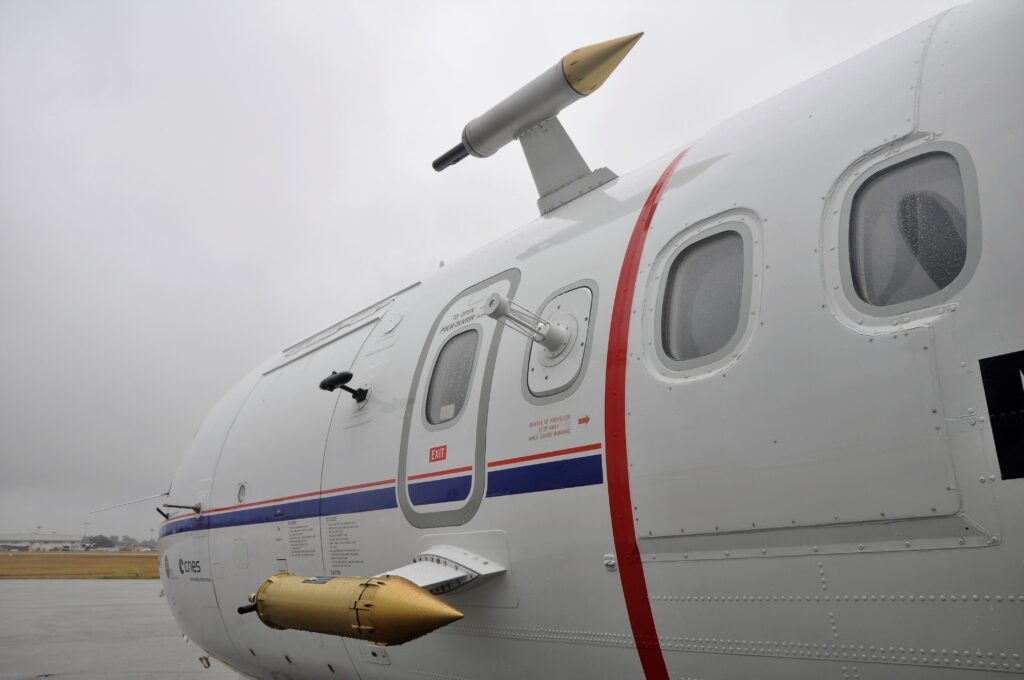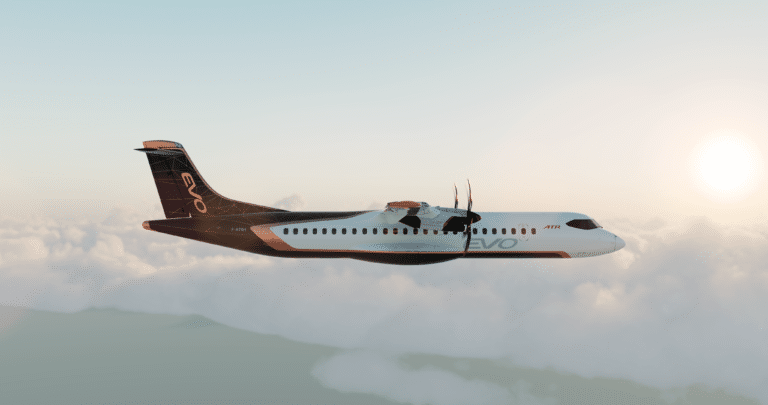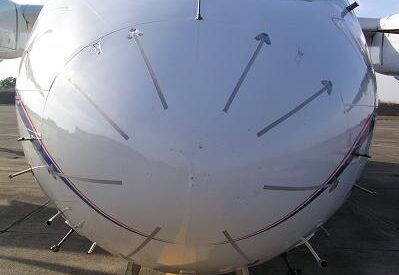SAFIRE’s ATR 42: A Flying Laboratory Revolutionising Atmospheric Research
SAFIRE’s ATR 42 isn’t just an aircraft—it’s a flying science lab packed with enough high-tech sensors to make a weather satellite jealous. If you love cutting-edge instruments, atmospheric data, and the thrill of airborne research, this is for you, so fasten your seatbelt; things are about to get very technical.
The French facility for airborne research
SAFIRE (Service des Avions Français Instrumentés pour la Recherche en Environnement) is a 100% public facility supported by the three entities Météo-France (French national weather service), CNRS (French national research agency) and CNES (French national agency for space).
Its objectives are to perform flights campaigns for
- Earth Observation
- Preparation & calibration/validation of EO space missions
- Test facility for aeronautical/space R&T

© copyright SAFIRE / Benoît Cellou
A flying laboratory
At the forefront of airborne atmospheric research, SAFIRE’s ( ATR 42 aircraft is a flying laboratory equipped with state-of-the-art technology designed to gather critical atmospheric data from the skies. This highly modified turboprop aircraft is a powerhouse of scientific innovation, featuring a suite of advanced instruments that enable real-time data collection.
With its highly specialised sensors and instruments, the ATR 42 plays a big role in meteorological studies, ranging from cloud microphysics and tropical convection to aerosol distribution and weather forecasting. The aircraft’s versatility makes it ideal for a wide range of research applications, offering unmatched insights into atmospheric complexities.

© copyright SAFIRE
Modifications for Advanced Research
Originally built as a commercial aircraft, the ATR 42 has undergone substantial modifications to become an effective tool for atmospheric science. The aircraft is now equipped with specialised instruments and sensor systems that make it a versatile platform for various meteorological studies.
The Nose of the aircraft is particularly notable, featuring special pressure measurement sensors on the radome (5-hole probe). This allows for precise 3D turbulence measurements in the atmosphere. In other words, it’s packed with fancy pressure sensors that let scientists measure turbulence in 3D.
The radome (aka the nose cover) itself is unique in its design, integrating total and differential pressure ports that are crucial for gathering data on airflow and turbulence.
© photos copyright SAFIRE

On the fuselage of the aircraft there are:
- 4 mounting points for PMS probes arranged in a crown pattern around the fuselage,
ensuring comprehensive data capture. - 7 N1 type holes are distributed along the fuselage to enhance measurement accuracy.
- And for bonus points and to further support scientific instruments, the ATR 42 has 1 radiometer mounting basin under the fuselage and another on the fuselage itself.
© photo copyright SAFIRE
The aircraft’s flexible design also allows for up to 4 windows to be fitted with probes or air inlets. These N1-type holes are essential for capturing atmospheric samples and improving the accuracy of weather and climate measurements. To accommodate larger sensors, four pylons located on the front half of the fuselage allow for the attachment of bulky equipment. Basically, it’s a flying science lab with plug-and-play customisation.
The ATR 42’s unique openings are key to its ability to carry out specialised missions. There are two pits under the fuselage, one at the front and one at the rear, each with dimensions of 700 x 450 mm and 650 x 450 mm, respectively. These pits can be equipped with BK7 glass to facilitate LIDAR or radar measurements, enabling the aircraft to study atmospheric conditions and surface properties in great detail.
Additionally, 4 openings on the top of the fuselage, with diameters of 400 mm, 200 mm, and 150 mm, can be fitted with glass or radiometers, allowing the aircraft to perform a wide variety of measurements. There are also 3 circular openings under the fuselage with diameters of 250 mm, 200 mm, and 150 mm, further enhancing the ATR 42’s versatility in collecting data.
Supporting Global Research with Advanced Instruments
The ATR 42 is equipped with a range of advanced scientific instruments that are essential for atmospheric research. In addition to its laser-based systems and spectrometers, the aircraft carries particle counters to measure aerosols in the atmosphere, gas analysers for detecting trace gases like carbon dioxide and methane, and temperature, pressure, and humidity probes for real-time weather data.
Its onboard LIDAR system allows for precise atmospheric profiling, offering valuable insights into aerosol distribution and cloud properties. This data is crucial for studying cloud microphysics and improving weather forecasts, while also contributing to climate change models that rely on accurate atmospheric data.

© copyright SAFIRE / Benoît Cellou
A Critical Tool in the Fight Against Climate Change
The ATR 42 is more than just a research aircraft—it is a vital instrument in the ongoing battle against climate change. As atmospheric science continues to evolve (because the weather clearly doesn’t want to stay the same) SAFIRE is constantly adding new instruments and upgrades to the ATR 42. Its flexibility allows for the addition of new instruments and modifications to meet the demands of emerging research projects, making it a powerful tool for both scientific experimentation and operational monitoring.
Its ability to gather real-time data on atmospheric composition, cloud structure, and aerosol concentration provides scientists with the tools they need to understand and predict the impact of human activities on the environment.
SAFIRE’s mission is to bridge the gap between aviation and scientific research. The data collected during each mission not only supports atmospheric research but also informs global efforts to address climate change and protect the environment.

© copyright SAFIRE
















